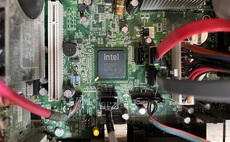Fourth generation Core chips to offer double the graphics performance of Ivy Bridge
Intel is promising that its upcoming Haswell processors will double the performance of their integrated graphics functions, aided by on-chip memory shared between the CPU cores and graphics. The...
To continue reading this article...
Join Computing
- Unlimited access to real-time news, analysis and opinion from the technology industry
- Receive important and breaking news in our daily newsletter
- Be the first to hear about our events and awards programmes
- Join live member only interviews with IT leaders at the ‘IT Lounge’; your chance to ask your burning tech questions and have them answered
- Access to the Computing Delta hub providing market intelligence and research
- Receive our members-only newsletter with exclusive opinion pieces from senior IT Leaders





















